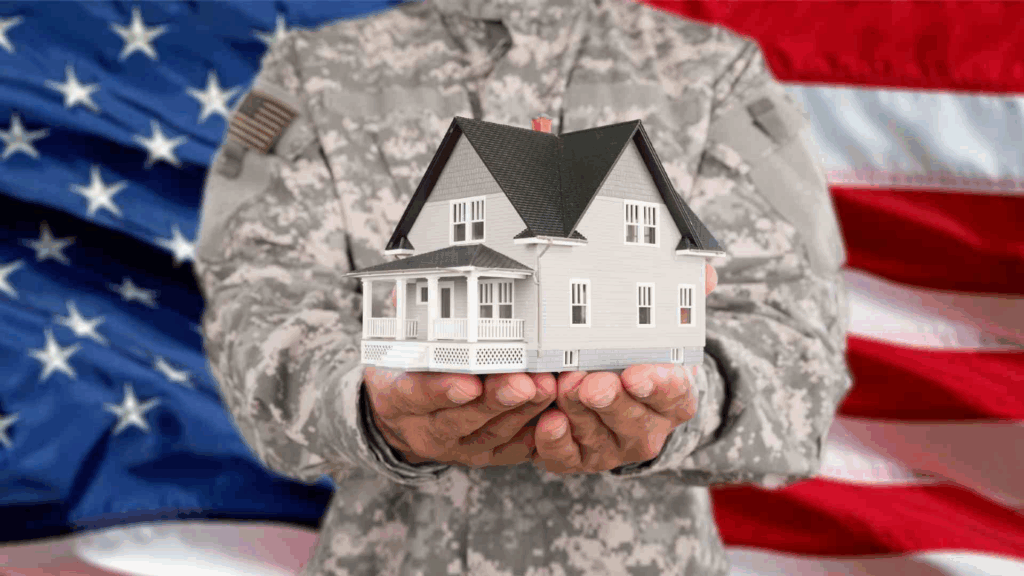Are you a veteran? Are you house hunting? Are you interested in learning about VA loan benefits? Good news! You’ve come to the right place. Buying a home is arguably one of the most important decisions of your lifetime. It’s a significant commitment involving considerable financial resources. Some say it’s just as important as choosing the right life partner, a profitable career trajectory, and having the right attitude to navigate through life.
VA loan eligibility pertains to veterans, active-duty service members, and eligible surviving spouses. It allows members of these groups to access special mortgage benefits. Among others, VA loan eligibility puts you in contention to enjoy a home loan with no down payment and no PMI (private mortgage insurance). Equally important is the fact that VA loans are backed by the federal government, which intends to offer mortgages at lower interest rates than conventional home loans.
Given the many benefits of VA loans, eligibility puts you in contention to enjoy homeownership more affordably than others. And it’s thanks to service above self that all of this is made possible. Whether you’re an active duty veteran, service member, National Guard member, peacetime service personnel, or surviving spouse, you may be eligible to qualify for a VA loan. Of course, there is a litmus test to validate your eligibility, and it’s known as a Certificate of Eligibility (COE).
Check to Ensure That You Meet the Qualification Criteria
But first, we must clearly establish VA loan eligibility criteria. VA loan qualification requires applicants to meet specific service requirements, notably:
- Active-Duty Personnel – at least 90 days of active-duty service.
- Reservist or National Guard – a minimum requirement of 6 years of service is needed.
- Peacetime Service Personnel – A minimum of 181 days of active-duty service.
- Surviving Spouse – Provided a surviving spouse does not remarry, eligibility is established.
Recall the COE mentioned earlier? This is an important document issued by the Department of Veterans Affairs. It establishes that the VA loan applicant is eligible to apply for the home loan issued through the lender. There is no skirting around the COE certificate. This important document verifies your eligibility and is available for download online or by mail. The COE certificate may be issued if the following documents are checked:
- De facto proof of military service (DD 214).
- Personal identification (Driver’s license, ID, passport, military discharge card, etc.)
- Any other paperwork as required by your VA loan lender.
Practical Benefits of Applying and Qualifying for a VA Loan

It’s easy to understand the benefits of a VA loan when you compare these loans to traditional mortgage loans. Let’s say you are house-hunting and you go with a typical mortgage broker, perhaps even your bank. To avoid the PMI, a borrower is required to put down a substantial deposit based on the property’s selling price. However, many lenders offer down payments on mortgages in the region of 3% – 5% with PMI included.
The down payment funds must typically be seasoned – in other words, they usually cannot be freshly borrowed money from a credit card or a personal or business loan. This may limit the possibility of new home ownership for anyone who does not have those funds readily available. VA home loans have funding fees (sometimes waived for disabled veterans) in the range of 2.3%, as well as property requirements and occupancy rules. These requirements must be taken into account.
Median Home Prices and Down Payments: VA Loans Make it Easier
Given the median price of homes in the US today – over $400,000 – a down payment that avoids PMI can be substantial. This adds costs to a traditional home loan. With VA loans, there is no PMI. However, here is where VA loans can truly shine – with competitive interest rates. The US is slowly emerging from one of the most restrictive interest rate periods in its history. Homeownership has been curtailed by prohibitive interest rates, which have hovered between 6% and 7% (2025 median rates).
With a VA loan, you can typically expect competitive interest rates. And since every percentage point matters when it comes to mortgage loans, small numbers matter. Below is a hypothetical example of a 0.5% reduction in interest rates on a $400,000 VA loan over 30 years:
With just a 0.5% reduction in interest rates on a $400,000 loan over 30 years:
- Conventional loan at 6.5% → about $2,528/month
- VA loan at 6.0% → about $2,398/month
That’s a monthly savings of around $130, which adds up to more than $46,800 over the life of the loan. Small reductions in interest rates translate into big cost savings over the lifetime of a mortgage loan. VA loans stand apart because they combine service-based eligibility with real financial benefits. These may include reduced interest rates and zero down payments. For Veterans, active-duty members, and surviving spouses, these plus points can make the path to homeownership much more affordable and secure.

